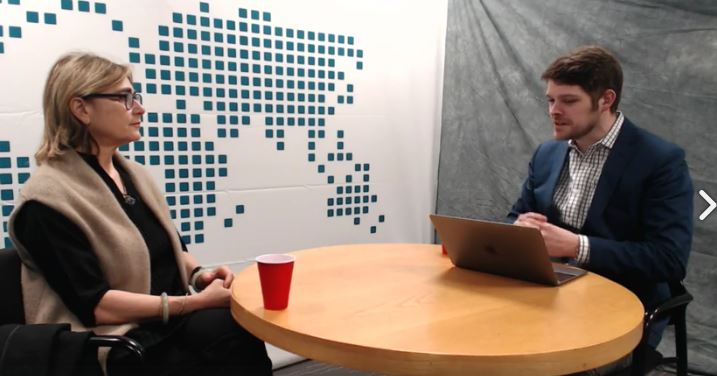Brief Background
In a Facebook Live event (click here to go to the webcast of 45 minutes) at Harvard Kennedy School on February 3, Professor Jacqueline Bhabha, FXB’s director of research, discussed refugees and the January 27 US executive order on immigration with Matt Cadwallader.
The order (full text here) covers several points, among them:
- a 90-day ban on all travelers from seven predominantly Muslim nations (Iran, Iraq, Libya, Somalia, Sudan, Syria and Yemen);
- a 120-day suspension of the US refugee program; and
- an indefinite ban on immigrants from Syria.
The situation and understanding of the order continue to change rapidly, with confusion and conflicting directives, initially about whether it applied to those who have long-term permission to reside and work in the United States (green-card holders) and its rollback of other visas for those from the named countries now legally in the United States. On February 3 in Seattle, federal judge James Robart, an appointee of former President George W. Bush, issued a nationwide stay, temporarily stopping enforcement of the order and ordering airlines to allow affected passengers to fly into the US. Over the weekend, the Ninth Circuit Court of Appeals denied the US Department of Justice’s request to set aside Robart’s ruling, but they will be hearing arguments this week. Litigation is likely to continue for months.
Answering Questions About Refugees and the Executive Order on February 3
Professor Bhabha reviewed the background and history of refugees, saying “Refugees come from all countries, and they come for all reasons.” She pointed out that there were large refugee populations that we often do not hear about such as the one hundred thousand people fleeing South Sudan or the Rohingya in Southeast Asia. She provided the legal definition of a refugee: someone with a well-founded fear of persecution because of race, religion, nationality, membership in a particular social group, or political opinion. She also mentioned that there are other humanitarian grounds for offering refuge, such as war. She answered questions about such terms as asylum-seekers, refugees, immigrants, illegal immigrants, and internally displaced people. She placed the current situation of refugees in historic perspective, not only of World War II, but also of the time of India partition, and Afghanistan where one out of every two people in the country has been a refugee over the past 35 years.
She discouraged listeners from calling the current situation with large numbers of refugees a “crisis,” because “crisis” conjures up danger and a panic response, encouraging a knee-jerk reaction of closing our doors, instead of looking at the actual situation. She reviewed some of the main points of the executive order (see above). She reminded listeners of the lack of correlation between refugees and terrorism. In many cases the refugees are being persecuted by those whom the United States considers enemies. She compared the idea of the Muslim ban to the situation in World War II, if countries had said “that we can’t let Jews in because they may be Nazis.” She pointed out that the United States already has in place extremely thorough vetting procedures for refugees, taking two years and sometimes as long as six years—much longer than other countries.
Bhabha analyzed President Trump’s idea of creating “safe zones” for Syrians in Syria. Theoretically, the theory of safe zones has merit: people would much rather stay in their own country. However, according to Bhabha, this solution would be tremendously hard to carry out and very expensive. Similar efforts have not been successful. The idea has been tried before, disastrously: during the Bosnian war, safe zones were created, with peacekeepers and patrols, but they did not keep people safe. For example, Srebnica, a UN Safe Area, saw the worst massacre of that war. In actuality, the United States probably could not guarantee safe zones in Syria.
She reiterated that where people have been accepted, they have contributed; she traced much of the strength and preeminence of the United States to professionals and students from abroad. She agreed that people were hearing a terrible echo of the Second World War and asked what it meant for the richest country in the world to turn its back on the suffering of the weakest.
- For an earlier post on the executive order, see February 6, In the News: FXB and the US Immigration Executive Order
- For more information on these issues as they impact children, see our Children on the Move page and report.
- For an explanation of terms, see the first chapter of the Children On the Move report, Framing Review.
- See also the February 6 Facebook Live event with Professor Bhabha and Dr. Jennifer Leaning, FXB’s director.


